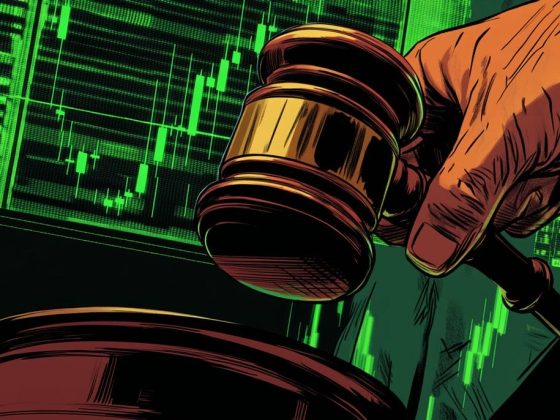Key Takeaways:
The price of Hamster Kombat’s HMSTR token has slumped 54% just one week after launch. Catizen’s CATI Token has fallen much faster, crashing 59% in two weeks. There’s concern about whether HMSTR and CATI will last the distance.Hamster Kombat and Catizen, two of Telegram’s most popular tap-to-earn games, have seen their token values plunge by between 50% and 60% just days after the projects launched on The Open Network (TON).
The dramatic price decline feeds into the narrative that Telegram crypto games and their related airdrop tokens lack long-term viability because most offer little utility beyond rewarding players, analysts say.
According to data from CoinMarketCap, Hamster Kombat’s HMSTR token has slumped 54% to $0.0046 just one week after the token was launched on Sept. 26. As of this writing, the price of HMSTR is up 1.6% on the day.
The Hamster Kombat player is a crypto exchange CEO persona who must grow his company’s stock by tapping to upgrade assets and hiring top talent. As Cryptonews previously reported, the game’s airdrop was marred by controversy, with accusations of unfair distribution.
Of the 300 million users claimed by Hamster Kombat, only 131 million received the HMSTR airdrop. Some 2.3 million players were banned for cheating, and the majority of them did not meet the criteria.
Users took issue with a last-minute announcement that 11.25% of the 60 billion HMSTR tokens allocated to the community for Season 1 would be locked up for 10 months, preventing any sales of the token in that period.
Other points of contention included the small size of the token allocation to regular users, the banning of some legitimate gamers, and influencers individually pocketing a bigger airdrop than community members.
Catizen’s CATI Token Sees Faster Decline
Meanwhile, Catizen’s CATI token has fallen much faster than HMSTR, with the token price tanking about 59% to $0.45 at the time of writing. The token peaked at a price of $1.10 after it started trading on exchanges on Sept. 20, per CoinMarketCap data.
However, it has continued to decline since then, with the total market value of CATI tokens falling by over half to $138 million. Trading volume, which hit $1.1 billion on the launch date, has tumbled to just $122 million.
The Catizen player runs a cat café where visitors come to check out the felines. They make money when a cat is picked by a patron and are rewarded with vKitty, an in-game currency.
The key to the gameplay is to swipe same-level cats into one higher-level cat, which can earn more points when picked up. Starting with one basic-level cat, the player receives more during the game. They can also use vKitty deposits to buy some supercats that speed up their quest for points.
Like Hamster Kombat, Catizen faced criticism for its alleged flawed token distribution. During its airdrop, eligibility was based on performance. Players were categorized into seven leagues, including “Silver League” and “Gold League,” depending on their vKitty earnings.
On Sept. 19, 15.2 million users – out of 40 million claimed by Catizen to have played the game since its launch in March – qualified for the airdrop.
But more than half of the community – over 20 million – fell into the Bronze League and didn’t qualify for the airdrop. And when those who qualified finally got their tokens, many felt cheated about not getting enough to make up for the time spent playing the game.
Why the Sharp Price Decline?
A number of crypto projects have struggled to survive beyond airdrop as members immediately cash out, leading to a sharp drop in price.
According to Illia Otychenko, lead analyst at Gibraltar-based crypto exchange CEX.IO, several factors could explain the rapid decline in the prices of HMSTR and CATI shortly after launch.
One of them is that tap-to-earn tokens are prone to high selling pressure immediately post-launch, as early users cash in on their gains, Otychenko told Cryptonews.
For example, when Notcoin (NOT) first hit the open market, its value dropped by 60%, he said. Notcoin is the first tap-to-earn project launched on the TON blockchain.
Similarly, the DOGS’ price plummeted 25% after its debut on Aug. 26, “likely due to profit-taking,” Otychenko said, adding:
“According to our tap-to-earn research, 30% of players plan to sell their tokens following an airdrop, contributing to this downward pressure.”
The other reason is that both the Hamster Kombat and Catizen communities felt short-changed by the airdrop allocations. It was, therefore, not surprising that many users dumped HMSTR and CATI as soon as the tokens were listed on exchanges like Binance, OKX and Bybit.
Otychenko also pointed to concerns surrounding the Telegram gaming ecosystem following the arrest of Pavel Durov, founder and CEO of the messaging app. He told Cryptonews:
“Recent revelations by Telegram’s CEO, stating that the platform has disclosed IP addresses and phone numbers to authorities since 2018, raised concerns about its neutrality and security. This had an immediate impact on TON, with its token price and TVL experiencing noteworthy declines.”
According to DefiLlama, the total value locked, or TVL, in the TON blockchain —a measure of the total amount of assets managed under a decentralized finance protocol—has plunged 46% to $412 million over the last two months. The figure peaked at about $776 million in July, the data shows.
Meanwhile, the price of Toncoin (TON), the native token of the TON blockchain, is down 35% since hitting an all-time high of $8.26 on Jun. 14, 2024. The token crashed nearly 30% within 48 hours of Durov’s arrest in August. TON is currently trading at around $5.35.
Telegram founded Toncoin in 2018 as the Telegram Open Network but later spun off the project following regulatory challenges. In 2020, a group of enthusiasts under the TON Foundation took over the project and renamed it The Open Network (TON), a Layer 1 blockchain.
Most Hamster Kombat, Catizen Token Holders in Loss
There’s concern about whether HMSTR and CATI will last the distance. For example, the cyberpunk-themed gaming ecosystem Pixelverse (PIXFI) – also built on TON – has bled more than 90% of its value since the project launched in late July.
LumberJack (LUMBER), another blockchain game built on The Open Network, has 95% within just two months of launch. Other P2E crypto games like Axie Infinity and Decentraland have all struggled to retain their initial appeal.
In a previous interview, the developers of Hamster Kombat said a strong token price would serve as a source of staying power after the airdrop.
“We think that the token, which will belong to millions of users throughout the world, holds a huge value in itself,” they predicted.
However, that does not seem to be the case for both HMSTR and CATI. Data from IntoTheBlock shows that across the TON ecosystem, profitability for the majority of holders of TON-based tokens is less than 40%. CATI and DOGS have “particularly underperformed in this regard,” said Otychenko, the CEX.IO lead analyst.
One major concern is that the number of people playing Telegram-based tap-to-earn games quickly nosedives soon after the airdrop.
For instance, Notcoin saw a surge to over 35 million monthly active users (MAU) before the airdrop, but this has since dropped to about 7.7 million, Otychenko detailed, quoting Telegram data. DOGS has suffered a similar fate, with its MAU falling from 37 million to 26 million in recent weeks.
The analyst noted that Hamster Kombat and Catizen “are currently bucking this trend.” Before their airdrops, the games had 96 million and 19 million monthly active users, respectively. Now, those numbers have climbed to 110 million and 21 million.
“This spike is likely due to heightened activity during the token launch period as users interacted with the app to claim rewards,” Otychenko stated, adding:
“However, if trends seen in other tap-to-earn games continue, Hamster Kombat and Catizen may experience a significant drop in active users, especially given the community’s disappointment with Season 1.”
The post Hamster Kombat, Catizen Tokens Plunge 60% Amid Viability Concerns appeared first on Cryptonews.


